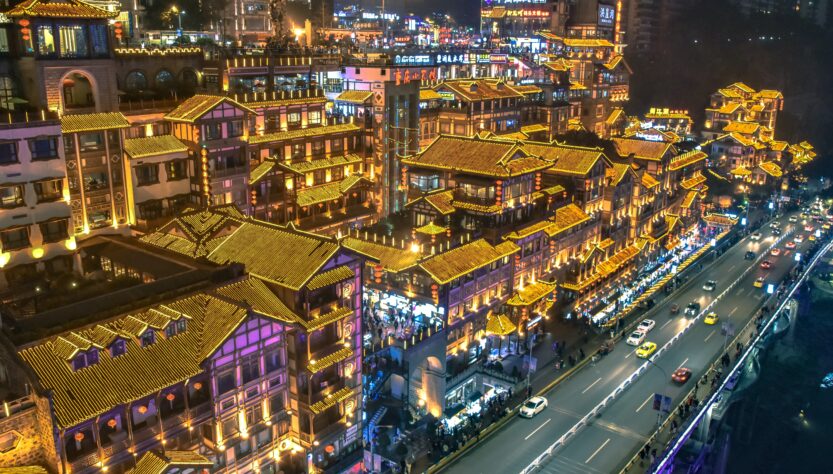Student of the Business and Management Department
In their meeting in Germany, the leaders of the Group of Seven (G7) agreed, among other things, on a plan for investment of 600 billion dollars called “Cooperation for Infrastructure and Global Development.” The idea is that Western countries counter China’s so-called “Belt and Road” program with multiple budgets. Germany, America, Italy, Great Britain, Japan, France, and Canada have promised to spend such a figure for investment in developing countries over the next five years with both government and private sector investment. The projects include the installation of a new telecommunication cable in the Indian Ocean, 1,000 miles long from Singapore to Egypt, the construction of a solar power plant in Angola, the construction of a hospital in Ivory Coast, and a vaccine factory in Senegal. The United States first proposed this plan in last year’s meeting of the Group of Seven, but since there was no progress, it has been presented again this year with a new title.
What does “Belt and Road” mean?
The plan launched by China a decade ago under the leadership of President Xi Jinping is known as the largest infrastructure program in history, spanning four continents and linking the ancient Silk Road to Europe and Africa on one side and China on the other. The name of this Chinese plan comes from its two wings: its “belt” is from the “Silk Road Economic Belt,” which includes road and rail transportation land routes in Central Asia along the famous historical “Silk Road.” Its “road” is also from the “Maritime Silk Road of the 21st Century,” which includes sea routes that stretch from Southeast Asia to South Asia and then to the Middle East and Africa.
How much is China’s investment?
Research institutions in the West estimate that this Chinese plan costs more than one thousand billion dollars. The latest estimates are that this figure has reached more than 1300 billion dollars. This is 10 times the cost of the Marshall Plan, the American plan after World War II for the modernization of Europe, which was 130 billion dollars at that time. However, if inflation is taken into account, today’s price of the Marshall Plan reaches about 1500 billion dollars, and China’s cost for “Belt and Road” still does not reach it. Xinhua, China’s official news agency, says at least 70 countries are covered by the plan, including at least 36 ports outside of China.
This Chinese plan, previously known as “One Belt, One Road,” is one of the components of the basic policy of the Chinese government to lead in global issues. By the beginning of this spring, 146 countries had joined this plan, which of course does not mean that all of these countries have yet taken action to develop this program.
Democracy against authoritarianism?
US President Joe Biden, on the sidelines of the Group of Seven meeting, said that the US $200 billion contribution to this plan is not “charity” and that everyone benefits from it. The President of the United States said that this plan will show the benefit of cooperation with the democracies of the world, mocking China, which is still governed by a one-party system and an authoritarian regime. The Chinese government has been accused of extensive cases of human rights violations, including the suppression of the Uyghur Muslim minority. When analyzing the consequences of China’s plan, analysts mostly point to the political and economic consequences of China gaining the upper hand in many of these countries.
China’s Proposed Plan
This plan includes two trade routes, the “Silk Road Economic Belt” and the “Maritime Silk Road.” The “Silk Road Economic Belt” follows the ancient Silk Road route and connects China to Europe through Central Asia, Russia, and the Middle East. The “Maritime Silk Road” connects China to Southeast Asia and Africa by sea. Xi Jinping, the President of China, presented this plan in 2013 to address the decline of two productive engines of China’s economy, namely the development of domestic economic infrastructure and the export of goods to developing countries. The main goal of the plan is to strengthen the growth of China’s economy, and through its implementation, Chinese companies will become global companies engaged in the development of infrastructure in all countries, even the North Pole, under the brand “One Belt and One Road.” China has specifically targeted 65 countries for infrastructure investment, including a $54 billion Pakistan-China Economic Corridor from Xinjiang to Gwadar and a 3,000 km high-speed railway connecting southern China to Singapore.
China plans to invest in economic infrastructure such as rail transport in about 60 countries worldwide, including Africa. The plan includes developing the transportation of goods and energy on the freeway from Moscow to Kazan in Russia, the Kazakhstan railway from Gorges to Aktau port on the coast of the Caspian Sea, several gas pipelines from Turkmenistan to China, the China-Kyrgyzstan-Uzbekistan railway, the Trans-Asia railway from China to Europe via Kazakhstan and Russia, the Silk Road railway that runs from China to Iran via Kazakhstan, and the China-Pakistan freeway. China may also challenge India for access to the Indian Ocean through the Straits of Malacca; therefore, the New Silk Road plan attempts to open another route to the Indian Ocean through the Pakistan-China Economic Corridor or through Bangladesh.
Assessments
The United States created the Trans-Pacific Partnership (TPP) under Barack Obama to curb China’s trade power in East Asia and the Pacific. However, Donald Trump effectively killed the TPP by cutting off US support. Meanwhile, Chinese President Xi Jinping announced that the New Silk Road project is open to everyone. While the US attempted to regulate free trade beyond World Trade Organization standards through the TPP, China aims to use the New Silk Road to channel its excess trade products to developing countries that need its help. In other words, the TPP is a regulated free common market, but the New Silk Road plan is a set of projects with economic institutional supports. The wave of anti-globalization and protectionism in developed countries, including the US, has provided China an opportunity to present this plan as an engine for increasing international trade.
What is the Contribution of Each Country in the Plan of the West?
During a press conference held to introduce this plan on the sidelines of the Group of Seven meeting, the President of the United States, along with the leaders of Germany, Italy, Japan, and Canada, spoke. Although the leaders of France and Britain were not present, their countries are also participating in this plan. Europe has pledged $300 billion, and the US has pledged $200 billion to participate in the plan, which is supposed to be similar to the Western “Belt and Road” plan. Other amounts are going to be jointly invested, which will reach a total of $600 billion. The G7 countries promised to spend 0.7% (7 per thousand) of their gross national income annually to help the development of other countries, but on average, they only spend 0.32% (a little more than 3 per thousand), which is less than half of their promise.


